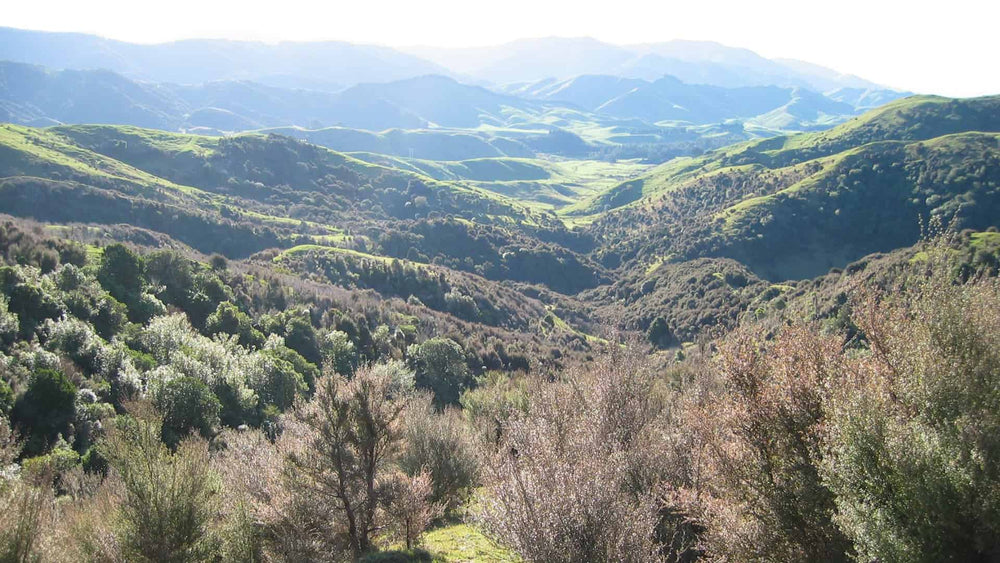The Special Properties of Active Manuka Honey

When I see a rainbow over our stands of Manuka Trees on our property I know I am the one who found that pot of natures gold nectar at Mount Bruce New Zealand… Manuka Honey.
Our property is home to naturally growing remote native (Manuka) leptospermum scoparium trees. Manuka is one of the first native trees to begin growing, in the regeneration process to Native bush, either from land cleared by early settlers, or naturally cleared (eg fire).
Even though the early settlers cleared the land, they also brought with them Honey bees.
Manuka honey did not exist before European settlers brought honey bees to New Zealand in 1839.
Māori have had a long relationship with Mānuka, they call it a taonga or ‘treasure’ and found a staggering amount of uses for it prior to the introduction of Honey Bees to New Zealand; from food to traditional medicinal uses, and all manner of tools and artefacts. Infusions made with the leaves were used to reduce fevers and treat stomach and urinary problems. Gum produced from the tree was used as a moisturiser for burns, and to ease coughing. Decoctions from the bark were used as a sedative, a mouthwash, and to treat diarrhoea and fever.
https://www.nzstory.govt.nz/stories/manuka-a-honey-of-a-plant/
Active Manuka Honey & ‘antibacterial’ activity
The nectar produced by our bees foraging on Manuka is truely special, and there is Science to prove it.
All honey has some ‘antibacterial’ activity, due primarily to hydrogen peroxide formed in a “slow-release” manner by the enzyme glucose oxidase present in honey .
However, Active Manuka Honey has further ‘antibacterial’ activity over and above that caused by hydrogen peroxide (often referred to Non peroxide activity NPA). For more information please read University of Waikato, Biological Sciences, Retired Faculty Member Peter Molan papers.
Advocates say Active Manuka Honey can treat wound infections and other conditions.
Variation in the potency of the Manuka Honey is due to variation in the sub species of the Manuka trees and also the percent of total Manuka Honey.
Testing Manuka Honey
Our honey is tested to ensure it is classified as ‘Monofloral’ Manuka in accredited laboratories.
The special properties in Active Manuka Honey are measured by testing the amount of Methylglyoxal (MGO) in mg/kg of honey. Methylglyoxal directly correlates with UMF TM (Unique Manuka Factor).
Our Manuka Honey displays both the MGO content and equivalent UMF. For example:
UMF 5+ is equivalent to MGO 83+. Our UMF 5+ is slightly higher as we guarantee it to also contain greater than 100mg/kg of MGO.
UMF 10+ is equivalent to MGO 263+.
UMF 15+ is equivalent to MGO 514+.
UMF 20+ is equivalent to MGO 829+.
The enzyme that produces hydrogen peroxide in honey is destroyed when honey is exposed to heat and light, or stored in warm conditions. But the non-peroxide antibacterial activity of manuka honey is stable, so there is no concern about genuine Active Manuka Honey losing its activity in storage. (refer http://waikato.academia.edu/PeterMolan )
Many medical professionals, in New Zealand and other countries, are using Active Manuka Honey (the genuine sort) – and are getting excellent results in patients with infected wounds that have not responded to any standard treatment such as antibiotics. For more information please read University of Waikato, Biological Sciences, Retired Faculty Member Peter Molan papers.
I personally have used our Active Manuka Honey straight from the hive to treat a bacterial skin infection in a cut on my hand. The infection was gone within days.
I eat a spoonful of our active Manuka Honey UMF 15+/ MGO 514+ per day for general wellness.

Loading Manuka Honey onto the truck ready to be extracted. Mountain Gold Manuka Honey has a honey processing and packing facility on the farm.

Manuka Honey being packed in our facility.
Products
View all
